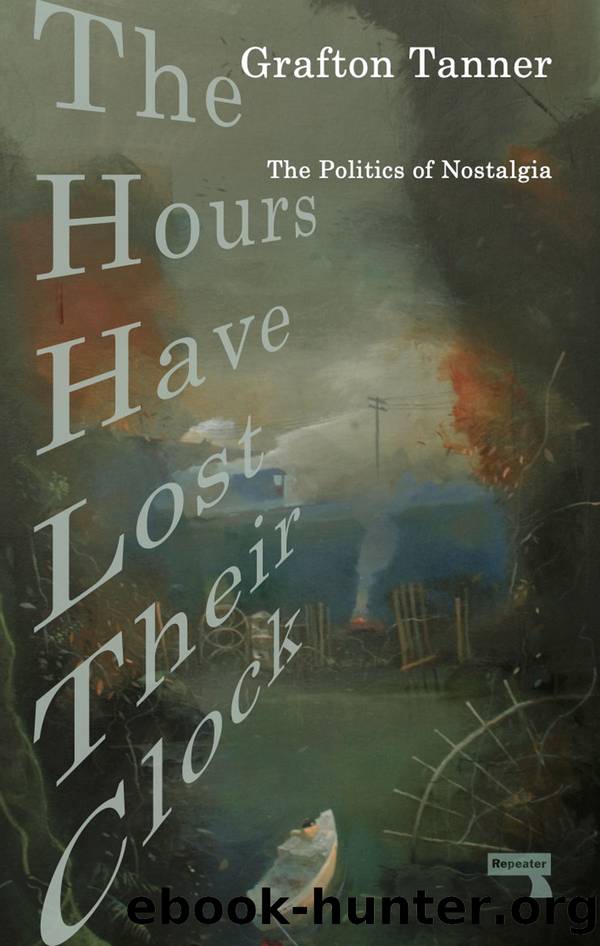The Hours Have Lost Their Clock by Grafton Tanner

Author:Grafton Tanner
Language: eng
Format: epub
ISBN: 9781913462543
Publisher: Watkins Media
Published: 2021-10-14T16:00:00+00:00
Part III
The Past in the Future
Chapter 8
Nostalgorithm
In 2012, Joan Serrà and a team of scientists at the Artificial Intelligence Research Institute of the Spanish National Research Council discovered a shocking trend: timbral variety in pop music had been decreasing since the 1960s.1 Using computer analytics, they broke down nearly half a million recorded songs to a set of variables, including loudness, pitch, and timbre, and found that most Western pop songs were getting louder and sounding the same.
Serrà âs findings marked a watershed moment for the music discovery industry, a billion-dollar race to build perfect models of songs so that algorithms can recommend them to listeners. In the early 2010s, the leading music intelligence company was The Echo Nest, which Spotify acquired in 2014.2 Founded in the MIT Media Lab in 2005, The Echo Nestâs algorithms could measure recorded music using a set of parameters quite similar to Serrà âs, including acousticness, danceability, instrumentalness, speechiness, and other clunky descriptors.3 To round out their models, the algorithms could also scour the Internet for anything ever written about a given piece of music.4 The goal was to design a complete fingerprint of a song, to reduce music to data and better guide consumers to the songs they were searching for.
In 2011, The Echo Nest released the Million Song Dataset, a detailed report of âsonic and cultural attributesâ of one million songs.5 By the time Spotify bought the company, it boasted over thirty-five million songs analyzed using one trillion data points.6 The Echo Nestâs data gave Spotify extraordinary recommendation powers to track your listening habits and suggest new music accordingly. Once a user has listened to enough music through Spotify to establish a taste profile, the recommender systems simply get to work. The more you use Spotify, the more Spotify can affirm or try to predict your interests.7
Serrà âs findings revealed that, long before the digital age, broader cultural algorithms determined what kinds of songs would go viral. Decades leading up to The Echo Nestâs creation, popular music was engineered by songwriters and producers to be more consumable. When there were no Echo Nest parameters, the music industry of the twentieth century relied on other kinds of data. So-called âmerchants of coolâ hit the streets in search of the next big trend, conducting studies on teenage desire that generated tons of data. That data was then consulted to manufacture the next hit. Itâs no surprise that pop music started sounding the same with the rise of the modern music industry.
But does all that data reveal a general sameness in pop music? Or does it create sameness? If we know the formula to the perfect hit song, wouldnât we use it to write songs? And if every song follows a similar formula, wouldnât they all sound the same as a result? Does the very act of reducing things to data make them similar?
As greater efforts are made to break down music to variables legible to computer algorithms, we will likely see a greater reduction in sonic differentiation
Download
This site does not store any files on its server. We only index and link to content provided by other sites. Please contact the content providers to delete copyright contents if any and email us, we'll remove relevant links or contents immediately.
| Coloring Books for Grown-Ups | Humor |
| Movies | Performing Arts |
| Pop Culture | Puzzles & Games |
| Radio | Sheet Music & Scores |
| Television | Trivia & Fun Facts |
Spare by Prince Harry The Duke of Sussex(4195)
Paper Towns by Green John(4169)
Never by Ken Follett(2880)
Learning C# by Developing Games with Unity 2021 by Harrison Ferrone(2872)
Fantastic Beasts and Where to Find Them: Illustrated edition by J.K. Rowling & Newt Scamander(2467)
The Man Who Died Twice by Richard Osman(2298)
Machine Learning at Scale with H2O by Gregory Keys | David Whiting(2291)
0041152001443424520 .pdf by Unknown(2220)
How The Mind Works by Steven Pinker(2213)
Fairy Tale by Stephen King(2069)
Will by Will Smith(2041)
Fantastic Beasts and Where to Find Them: The Original Screenplay by J. K. Rowling(2041)
Reminders of Him: A Novel by Colleen Hoover(1879)
The God delusion by Richard Dawkins(1848)
Borders by unknow(1785)
Rationality by Steven Pinker(1765)
The Dawn of Everything: A New History of Humanity by David Graeber & David Wengrow(1570)
The Artist's Way by Julia Cameron(1562)
Cloud Cuckoo Land by Anthony Doerr(1434)
